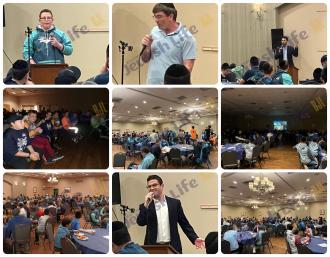New York - Many common over-the-counter lice remedies are no longer effective at stopping these critters from taking up residence on kids’ heads, according to a study that has some doctors recommending prescription remedies instead.
Two non-prescription options in particular that parents often buy to stop lice – permethrin (Nix) and synergized pyrethrins (Rid) – can no longer keep the bugs away, said Dr. William Ryan, one of the study authors.
“For decades they have been widely and easily available and have been used over and over, and it is inevitable that resistance will emerge when that happens,” said Ryan, former head of development at Sklice, a maker of prescription lice lotion.
“Even worse, when people see they don’t work, they keep re-treating, so that all the repeated use just makes the head lice increasingly resistant,” Ryan added by email.
For the current study, Ryan and colleagues examined data from previously completed research on lice remedies available in the U.S. through October 2015.
Back in the 1980s and 1990s, medicines like Nix and Rid were usually effective after just one treatment, the research review found. Some studies found these remedies 100 percent effective as recently as 1998.
But after that, studies often found these treatments cleared up lice with a single use less than half of the time.
One study in 2009 found they worked in a single use just 26 percent of the time, or about as effective as a placebo, Ryan said.
Home remedies such as petroleum jelly, mayonnaise and essential oils, have not been demonstrated as safe or effective, the research review also found.
At the same time, several prescription products were effective with a single application even without the tedious process of combing out nits by hand, the analysis found. These included malathion, spinosad and topical ivermectin.
Another prescription remedy, benzyl alcohol, worked without nit combing with two applications.
Although combing is appropriate to remove dead lice and eggs, rigorous combing may only be something parents need to do for cosmetic reasons, the authors conclude.
One limitation of the study is that some of the over-the-counter remedies are much older, which may have allowed more time for lice to develop resistance to the products.
While prescription options may be better, they’re also much more expensive, noted Dr. Barbara Frankowski, a pediatrics researcher at the University of Vermont Children’s Hospital in Burlington who wasn’t involved in the study.
“They are all VERY expensive – some well over $100 for a single treatment – and certain insurance companies will only cover certain products, often with an extremely high co-pay,” Frankowski said by email. “If you don’t have insurance that covers prescriptions, and you are not rich, you are out of luck!”
It may be reasonable for parents to try over-the-counter products first, as long as they are certain their kids have lice and they use it at least twice at 7 to 10 day intervals, said Dr. Bernard Cohen, a pediatrics and dermatology researcher at Johns Hopkins University in Baltimore who wasn’t involved in the study.
“Consider the prescription products if this does not work in a timely fashion,” Cohen said by email.
It’s also important to check the whole family for lice when one person gets infested, Cohen added.
“Close physical contact is the most common way of acquiring lice, since they do not fly or jump,” Cohen said. “I still think that one of the most common problems is not identifying close contacts who are infested and treating them appropriately,” he said.
“After treatment, I recommend not sharing combs, brushes, or hats with anyone else and avoiding contact with those who might be sources who have not been treated,” Cohen added.

















